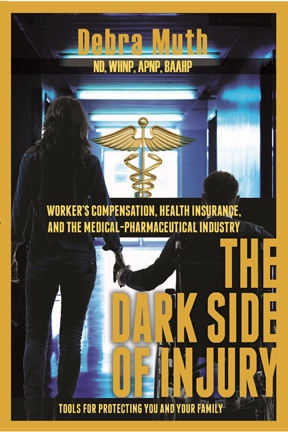Heart Disease: An Aging Problem
Cardiac disease is a growing concern in our aging population 17.3 million people die a year from cardiac disease. By 2030 >23.6 million people will die from heart disease. People are developing heart disease at a younger age partially due to our poor quality food and lack of exercise. Decline in mitochondrial activity is also largely responsible for cardiovascular and neurological disorders as well as obesity and type II diabetes.
Heart Disease Health Facts
- 50% of heart attack patients HAVE NORMAL LDL-C
- SUDDEN DEATH is the first sign of cardiovascular disease in up to 50%
- 10-24% of the world’s population has nonalcoholic fatty LIVER DISEASE
- Metabolic Syndrome confers a twofold
increase in cardiovascular events and a 1.5X RISK OF DEATH
Loss of mitochondrial function in muscle tissue also leads to the familiar “flabby” body composition that causes muscle atrophy and increased body fat. Studies show that supplementation with carnitine can restore mitochondrial function to near-youthful levels. Total carnitine levels decline with aging and are roughly 20 % lower than in youth, leaving the mitochondria vulnerable to damage.
Heart muscles use fat as its primary form of energy source. This is why a no-fat diet is not recommended in Serenity’s heart health program. Carnitine is a fat-transporting compound that is absolutely essential for normal heart function. Carnitine increases nitric oxide that helps endothelial cells relax and increase blood flow, which can help lower blood pressure.
People with heart muscle damage from heart attacks or heart failure have especially low carnitine levels. Fortunately, carnitine supplementation has proven to be remarkable effective in fighting and even reversing the heart-weakening effects from that drop in carnitine levels. L-Carnitine supplementation prevents the progression of heart muscle damage in people with CHF and improves exercise with exertion.
Heart Disease Financial Facts
- Yearly heart disease healthcare expenditure per individual $5693
- Yearly fatty liver disease healthcare expenditure per individual $2600
- Yearly metabolic syndrome healthcare expenditure per individual $2000
Do you want to save on your healthcare costs and better yet save your health? You must see the practitioners at Serenity Health Care Center to help you with your Cardiac Health. We can help you decipher your genetic information and create a plan for you that is as unique as you are.
If you have completed a lipid panel this is a great place to start but it is a basic group of tests to determine the risk for cardiovascular and related diseases. This test should always be combined with advanced testing to unveil a more accurate picture of total health. This will give specific information about your lipid profile so you will know if you should be worried about the abnormal lipid panel.
Lipoprotein particle size/number and Apolipoprotein concentrations reveal levels of good and bad cholesterol particles. Inflammatory processes are independent predictors of risk. Testing reveals the level of inflammation of blood vessels that may lead to plaque rupture, ultimately resulting in a heart attack or stroke. Advanced tests detect strain or other damage to the heart muscle. Metabolic markers can lead to early detection of diabetes and cardiovascular disease, which may reduce or eliminate a patient’s need for insulin. A Fatty Acid Profile is a potent indicator of the nutrients in a patient’s diet that can improve cardiovascular health.
Call today for an appointment to discuss Serenity Health Care Centers Cardiac Program 262-522-8640.
REFERENCES:
Noland RC, Koves TR, Seiler SE, et.al. Carnitine insufficiency caused by aging and overstimulation compromises mitochondrial performance and metabolic control. J Biol Chem. 2009 Aug 21;284 (34):22840-52
Terman A, Kurz T, Navratil M, Arriaga Ea, Brunk UT, Mitochondrial turnover and aging of long-lived postmitotic cells; the mitochondrial-lysosomal axis theory of aging. Antioxid Redox Signal. 2010 Apr;12(4):503-35
Chakrabarti S, Munshi S, Banerjee K, Thakurta IG, Sinha M, Bagh MB. Mitochondrial dysfunction during brain aging: role of oxidative stress and modulation by antioxidant supplementation. Aging Dis. 2011 Jun:2(3):242-56
Wang CH, Wang CC, Wei YH. Mitochondrial dysfunction in insulin insensitivity: implication of mitochondrial role in thyep 2 diabetes. Ann NY Acad Sci. 2010 Jul;1201:157-65
Pesce V. Fracasso F, Cassano P, Lezza AM, CAntatore P, Gadaleta MN. Acetyl-L-carnitine supplementation to old rats partially reverts the age-related mitochondrial decay of soleus muscle by activating peroxisome proliferator-activated receptor gamma coactivator-I-alpha-dependent mitochondrial biogenesis. Rejuvenation Res. 2010 Apr-Jun 13(2-3):148-51
Chao HH, Chen CH, Liu JC, Lin JW, Wong KL, Cheng TH. L-Carnitine attenuates angiotensin II-induced proliferation of cardiac fibroblasts: role of NADPH oxidase inhibition and decreased sphingosine-1-phosphate generation. J Nutr Biochem. 2010 Jul:21(7):580-8
Gomez LA, Heath SH, Hagen TM. Acetyl-L-Carntine supplementation reverses the age-related decline in carnitine palmitoyltransferase 1 (CPT1) activity in interfibrillar mitochondria without changing the L-carnitine content in the rat heart. Mech Ageing Dev. 2012 Feb-Marl 133 (2-3):99-106
Kobayashi A, Masumura Y, Yamazaki N. L-carnitine treatment for congestive heart failure-experimental and clinical study. Jpn Circ J. 1992 Jan;56(1) 86-94.
Bartels GL, Remme WJ, den Hartog FR, Wielenga RP, Kruijssen DA. Additional antischemic effects of long-term L-propionylcarnitine in angina patients treated with conventional antianginal therapy. Cardiovasc Drugs Ther. 1995 Dec;9(6):749-53
Molyneux R, Seymour AM, Bhandari S. Value of carnitine therapy in kidney dialysis patients and effects on cardiac function from human and animal studies. Curr Drug Targets. 2012 Feb; 13(2):285-93
Davinia P, Biagalli A, Lamanna F, Boem A. controlled study on L-carnitine therapeutic efficacy in post-infarction. Drugs Exp Clin Res.1992; 18(8):355-65
Stasi MA, Sciloi MG, Arcuri G, et al. Propionyl-L-Carnitine improves postishemic blood flow recovery and arteriogenetic revascularization and reduces endothelial NADPH-oxidase 4-mediated superoxide production. Arterioscler Thromb Vasc Biol. 2010 Mar;30(3);426-35
Lapi D, Sabatino L, Altobelli GG, Mondola P, Cimini V, Colantuonl A. Effects of propionyl-L-carnitine on ischemia-reperfusion injury in hamster cheek pouch microcirculation. Front Physiol 2010;1:132.
Gomez-Amores L, Mate A, Miguel-Carrasco JL., et al. L-carnitine attenuates oxidative stress in hypertension rats. J Nutr Biochem. 2007 Aug;18(8):553-40
Alvarez de Sotomayor M, Bueno R, Perez-Guerrero C, Herrera MD. Effect of L-carnitine and propionyl-L-Carnitine on endothelial function of small mesenteric arteries rom SHR. J Vasc Res. 2007;44(5):354-64
De Sotomayor MA, Mingorance C, Rodriguez-Rodriguez R, Marheunda E, Herrera MD. L-carnitine and its propionate; improvement of endothelia function in SHR through superoxide dismutase dependent mechanisms. Free Radical Res. 2007 Aug;41(8);884-91
Volek SR, Judelson DA, Silvestre R, et al. Effects of carnitine supplementation on flow-mediated dilation and vascular inflammatory responses to a high-fat meal in healthy young adults. Am J Cardiol. 2008 Nov 15;102(10):1413-7
Loffredo L. Pignatelli P, Cangemi R, et al. Imbalance between nitric oxide generation and oxidative stress in patients with peripheral arterial disease effect of an antioxidant treatment. J Vasc Surg, 2006 Sep;44(3):525-30
Mingorance C, Duluc L, Chalopin M, et al. Propionyl-L-Carnitine corrects metabolic and cardiovascular alterations in diet-induced obese mice and improves liver respiratory chain activity. PloS One. 2012;7(3);e34268
Amin KA, Nagy MA. Effect of Carnitine and herbal mixture extract on obesity induced by high fat diet in rats. Diabetol Metab Syndr. 2009;1(1):17.
Mangou A. Grammatikopoulou MG, Mirkopoulou D, Sailer N, Kotzamanidis C, Tsigga M. Associations between diet quality, health status and diabetic complications in patients with type 2 diabetes and comorbid obesity. Endocrinol Nutr. 2012 Feb;59(2):109-16
Ringseis R, Keller J, Eder K. Role of carnitine in the regulation of glucose homeostasis and insulin sensitivity: evidence from in vivo and in vitro studies with carnitine supplementation and carnitine deficiency. Eur J Nutr 2012 Feb;51(1):1-18
Kang JS, Lee WK, yoon WK, et al. a combination of grape extract , green tea extract and L-carnitine improves high fat diet induced obesity, hyperlipidemia and non-alcoholic fatty liver disease in mice. Phytother Res. 2011 Dec;25 (12):1789-95
Malaguarnera M, Cammalleri L, Gargante MP, Vacante M, Colonna V Motta M. L-carnitine treatment reduces severity of physical and mental fatigue and increases cognitive function in centenarians: a randomized and controlled clinical trial. AM J Clin Nutr. 2007 Dec;86(6):1738-44.
Xia Y, Li Q, Zhong W, Donj J, Wang Z, Wang C. L-Carnitine ameliorated fatty liver in high calorie diet/STZ-induced type 2 diabetic mice by improving mitochondrial function. Diabetol Metab Syndr. 2011;3:31.


